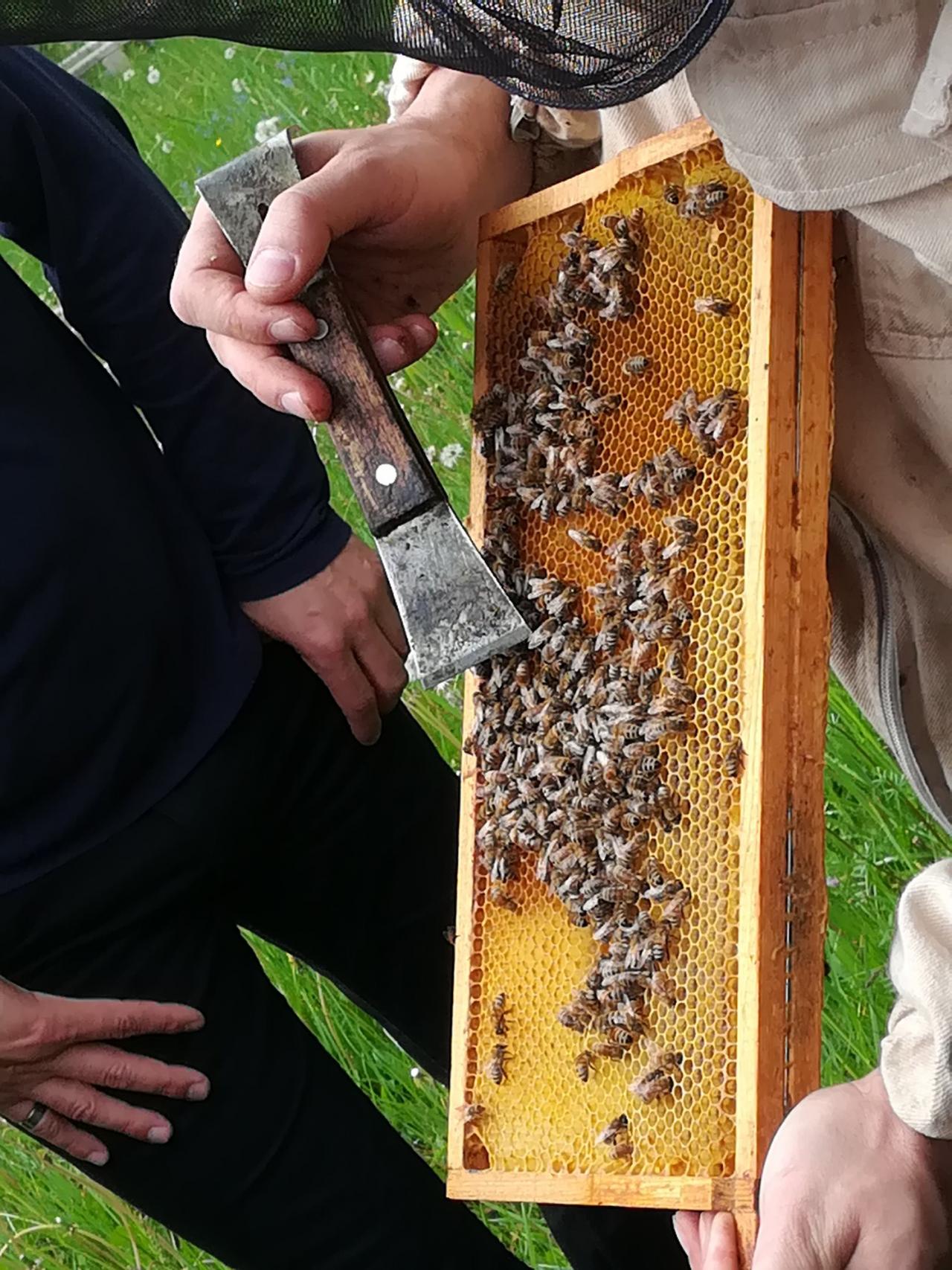
How Ljubljana inspired Cesena to address the fundamental role that pollinators play in ecosystems and in urban environments.
The coordinator of the Cesena URBACT Local Group shares with us their transfer story as part of the URBACT BeePathNet network.
Introduction
Getting to know the world of bees has been a turning point to deepen my awareness about human pressure on the environment, given their capital role in human life while being extremely sensitive to its consequences. Bees let us open discussions about climate change and biodiversity: two vital issues provoking a critical evaluation of our economic system and the society we want to build, calling into question the very sense of our actions.
My awareness on the unbalanced connection between human actions and the environment has grown over the years, working on urban environments and urban regeneration issues. The necessity of a new ecosystemic approach appeared to me to be ever more urgent, where humans would assume a different role than the one of a parasite.
In the BeePathNet I found an opportunity to enhance my project design skills in relation to this kind of approach, and in particular, the GP of Ljubljana was of great and thought-provoking inspiration.
LEARNING PROCESS – from the Ljubljana strategy to the building of Cesena Transfer Plan: knowledge and understanding to find new actions
The Ljubljana Good Practice

The Boot camp that took place in Ljubljana in April 2019 was of great relevance for me. The strategy that the city of Ljubljana decided to follow could be defined as a down/up approach, focused on using all the available spaces to increase the number of apiaries within the city as much as possible. This approach includes the identification of green urban spaces on the ground level (down) and flat roofs, on the sky level (up), as spaces adequate to house beehives. I have learnt which are the main characteristics that both the locations should have. Since I am a trained architect, this new awareness and knowledge (even if basic) gives me the possibility to support the technical urban offices of the Municipality working together with the URBACT Local Group (ULG) members.
Moreover, in Ljubljana the close connection between apiculture and society is very evident, as demonstrated by the time beekeepers dedicate to the schools and also by the fact that many teachers are also beekeepers. In fact, simply introducing bees in a city is not enough to have a real urban apiculture: to reach different goals and cover different fields, a network is needed. This is the way to truly raise awareness in the people and in the future citizens: the network is the fundamental starting point to build and to share knowledge and mindfulness, since bees represent a chance to talk about so much else.
City Visits
How urban spaces can become real biodiversity havens supporting city pollinators, but also means to engage and actively involve the citizens, strengthening their relationship with the PA, appeared evident also during our City Visit in Budapest, led by the Hegyvidék district’s team.
In Bydgoszcz, the focus was on the “Education” theme, thanks to the diffusion of projects for all ages, aiming to share knowledge, thus building an ever-growing awareness. Starting from the BeePathNet educational journey destined to elementary schoolers, then the Botanical Gardens Casimir the Great, hosting several beehives as teaching tool and for the production of honey, thanks to the efforts of a polish beekeeper and ULG member, and finally the urban apiary installed on the University rooftop, heart of an educational and employability training project for adults.
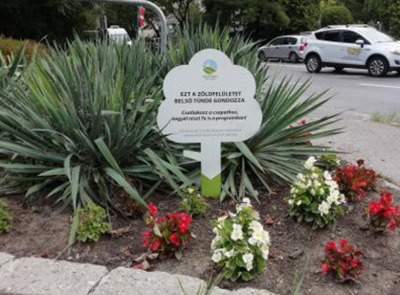
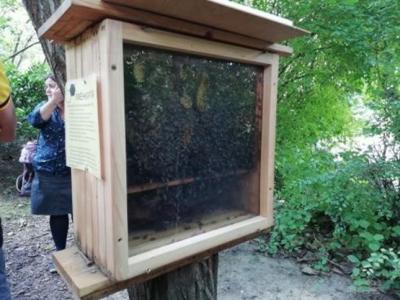
Transfer: the objectives of Cesena
To transfer the Ljubljana and other partners Good Practice, Cesena chose to focus on the strengthening of people’s awareness and eradicate the distorted perception of bees as a threat, still so engraved in society, by emphasising the fundamental role that pollinators play in the ecosystem (also in urban environments). The techniques borrowed from Ljubljana to widen the network, engage and educate the citizens with a new scope on the territory, pass also through the valorisation of apiary products and the promotion of a different kind of tourism. On this journey, the exchange with the partner cities is an opportunity for dialogue, finding shared solutions to local issues.
ULGC: growth of the culture of collaboration
Being the BeePathNet ULG coordinator let me put my expertise and organisational skills at the service of the group, supporting the collaboration between the members to:
- identify new contacts and widen the network;
- facilitate the rooting of a deeper awareness about the importance of collaborative actions in creating new opportunities;
- promote the growth of new project designing realities able to evolve independently.
To reach these goals, it is essential to get into relations with the people forming the group, to get to know each other and make individual skills and expectations emerge, therefore facilitating the team building. To this end, a simple on-line questionnaire submitted to the group at the beginning of our path, has been very useful and even brought out a common will to share expertise, knowledge and experience, especially on the local level.
TRANSFER PLAN E WORLD BEE DAY – from personal awareness to a shared Action Plan and event organisation
Action Plan: Methods
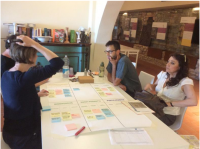
To turn ideas and visions into a “Cesena Bee Path”, the ULG group has been divided into sub- groups dedicated to specific themes and activities, identifying ideas potential development, possible synergies, and local, regional and international funding sources.
As a tool to ultimately turn concepts into actions, a “Navigator” has been devised: an instrument supporting the sharing of ideas and proposals while enabling their discussion, useful for reaching shared conclusions and choices about the actions to be included in the 2019- 2020 Action Plan. It also enabled the group to be constantly up to date on the work progress, offering a clear visualization of the results. Due to the lockdown, and its consequent necessity to rethink the means of collaboration, the Navigator had to be turned into a digital tool. That was overall a positive occurrence, since the new tool adopted maintains the original effectiveness while offering a wider feature potential.
Action Plan: the Map
The exchange with the City partners has brought up the value of the Bee Path as a common platform for the dissemination of awareness and knowledge about apidology, but moreover, for the promotion of a new kind of beekeeping-driven tourism & production, a concept that is materialized in the realization of a thematic map.
The map of Cesena was designed with the City centre and the territory connection in mind, while promoting all realities related to bees and bee products. The choice to issue an open call to collect and select the points of interest has been an opportunity to widen the project reach.
In the words of Martina and Enrico, beekeepers of the Società Agricola OrtiCà: thanks to the map, “anyone who wishes to get to know the world of bees and the products they give us could use it. I’m thinking of professional cooks, patisseries, ice cream makers with whom a network of multidisciplinary relations could, hopefully, be created, which is a goal for this project but also something we seek and wish to realize, and eventually translates into the valorisation of the territory”.
Action Plan: il WBD (on- and off-line)
On May 20th, 2019, our first World Bee Day, proclaimed in 2018 by the UN thanks to the city of Ljubljana, took place in Cesena. It was a beautiful day, we took a walk through the places of the city that speak of beekeeping, respect for biodiversity, and respect for pollinators. It has been an impressive occasion of sharing and participation, and discovering of places and people. Bees once again prove to be a powerful vector of messages, concerning respect for nature, the protection of biodiversity, the need for a healthier relationship between man and the environment also, and above all, in the urban context.
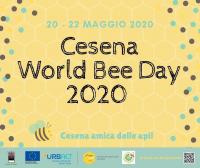
The 2020 World Bee Day found us in a full lockdown, but we couldn’t possibly renounce such a relevant opportunity for exchange and dissemination, so a different approach was needed to host the event. The lead partner and all the realities involved came up together with the concept of an online event, which has been a challenging opportunity that brought out many positive features and contributions especially from the ULG members. The co-planning process and the commitment of the ULG members and local network has been invaluable for the celebration of the first Cesena WORLD BEE DAY entirely on-line and the creation of a series of new digital contents for schools, families and citizens has been a relevant contribution to the project diffusion. All contents were presented from time to time on the event Facebook and YouTube page and on the dedicated municipal website.
Of course, given the obstacles and difficult circumstances, the outcome of the day could not reach the expectations of an off-line event, as brought up by the ULG beekeepers. In fact, if, on one hand, the digital tools let us reach and involve a larger and younger public, on the other hand the face to face experience is invaluable to really get to understand the bee world. Nonetheless, the ULG participation and great collaborative approach has been a great success and left me very satisfied.
THE URBACT LOCAL GROUP (ULG)
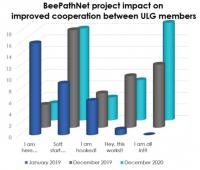
The Cesena ULG was formed as a ‘regional’ network from the start, including partners from neighbouring cities – Forli and Bologna – joining the Cesena core. In the 2nd year the group spread even further, all the way to Turin and Rome.
ULG members are an interesting mix of beekeepers, teachers, farmers, entrepreneurs, various NGOs and associations, but also researchers and private companies. With 47 ULG members, the group is of a medium size, but “a very active” one.
The diagram on the right visualises a constant increase in the level of cooperation among ULG members, demonstrating the effects of continuous and goal-oriented work, the benefits of a constructive and creative ULG environment, and the resulting mind change.

